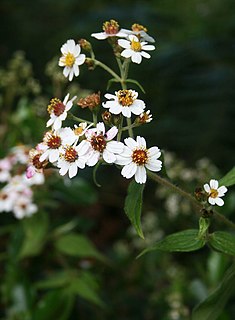Related Research Articles
The year 1809 in science and technology involved some significant events, listed below.

Karl Hermann Johannes Thiele was a German zoologist specialized in malacology. Thiele was born in Goldap, East Prussia. His Handbuch der systematischen Weichtierkunde is a standard work. From 1904 until his retirement in 1925 he was the curator of the malacological collection at the Museum für Naturkunde in Berlin. Thiele described more than 1.500 new species of molluscs; until today their types are deposited with the Museum of Natural History in Berlin. Especially important are his works on the Mollusca of the First German Antarctica Expedition and of the German Deep Sea Expedition aboard the vessel Valdivia.

Christian Ludwig Nitzsch was a German zoologist. He is best remembered for his approach to classifying birds on the basis of their feather tract distributions or pterylosis of their young.

Eduard von Martens also known as Carl or Karl Eduard von Martens, was a German zoologist.
Johann Carl Megerle von Mühlfeld was a scientist and zoologist who lived from 1765 to 1842.

Werner Ernst Martin Janensch was a German paleontologist and geologist.
The Berlin Society of Friends of Natural Science, (GNF) is a scientific society founded in 1773.

Phallus duplicatus is a species of fungus in the stinkhorn family. The bell-shaped to oval cap is green-brown, the cylindrical stalk is white. When mature the cap becomes sticky with a slimy green coating that attracts flies that disperse its spores, and it has a distinct, "netted" universal veil. The fungus is edible when still in the "egg" stage, before the fruit body has expanded. It grows often in public lawns, and can also be found in meadows.
Chondrina clienta is a species of small air-breathing land snail, a terrestrial pulmonate gastropod mollusk in the family Chondrinidae.

Hysterionica is a genus of flowering plants in the daisy family.

Alloispermum is a genus of flowering plants in the daisy family described as a genus in 1807.

Gustav Tornier was a German zoologist and herpetologist.

Helicina platychila is a species of tropical land snail with an operculum, a terrestrial gastropod mollusk in the family Helicinidae.
Conchoderma is a genus of goose barnacles in the family Lepadidae.
Karl Grünberg was a German entomologist specialising in Lepidoptera.
Tetroncium is a genus of plants in the Juncaginaceae described as a genus in 1808. It contains only one known species, Tetroncium magellanicum, known from a few sub-Antarctic islands: Tierra Del Fuego, Falkland Islands, and Gough Island.The plant got the name magellanicum because the original description was describing the sample found near the Strait of Magellan.
Philipp Wilbrand Jacob Müller was a German entomologist who specialised in Coleoptera.

Catharina Helena Dörrien was a German botanist and teacher, recognized as "the most celebrated German-speaking female naturalist of the period". She was a talented artist who painted over 1,400 watercolor botanical illustrations, and published a catalogue of plants of the Principality of Orange-Nassau in 1777. She was also the first woman to name a fungal taxon.
Persicula interruptolineata is a species of sea snail, a marine gastropod mollusk, in the family Cystiscidae.
Otto Wilhelm Hermann Reinhardt was a German botanist and conchologist. He was a teacher at a trade school in Berlin. Reinhardt was a friend of Paul Friedrich August Ascherson and co-founder of the botanical society in Brandenburg province.